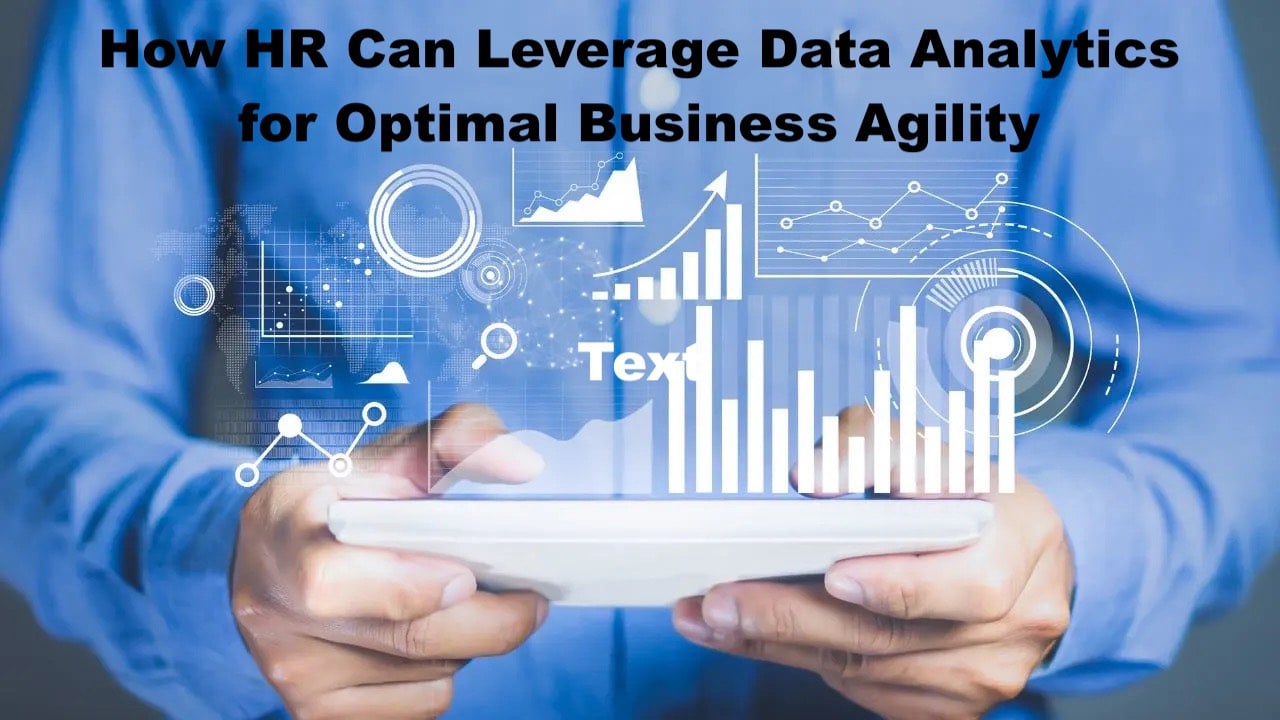If the past few years have taught us anything, it’s that staying agile is the key to success in the modern business world. If your organization is nimble and positioned in a way that it can quickly adapt to change, it is more likely to thrive – even in trying times. However, this is easier said than done, especially for larger or more established companies.
Fortunately, HR departments now have the power of data analytics at their fingertips, thus offering the potential for optimal business agility – giving companies a leg up in the ever-changing business landscape.
Data Analytics: The New HR Superpower
Gone are the days when HR was seen as just the department in charge of employee benefits and performance evaluations. Today, HR is seen as the driving force behind a company’s agility and competitiveness. But with so many different areas to focus on, how can HR make sure they’re having the greatest impact possible? The answer lies in data analytics.
Data analytics has revolutionized the way organizations make decisions, and HR is no exception. By harnessing the power of data, HR can gain invaluable insights into everything from employee engagement to talent acquisition and retention. Armed with these insights, HR professionals can make informed decisions that drive business agility and help their companies stay ahead of the game and remain competitive.
Advertisement
Content in this Article
From data overload to data-driven insights
Of course, having access to data is one thing, but making sense of it is another. With the sheer amount of data generated in today’s organizations, it can be overwhelming for HR to know where to start. The key is to focus on the right data and use the right tools to make sense of it. HR can begin by identifying the metrics that matter most to their organization’s success. Some examples of metrics that can provide valuable insights into the effectiveness of HR initiatives include:
- Employee engagement
- Training effectiveness
- Cost-per-hire
- Time-to-fill positions
- Talent retention rates
Benchmarking in HR data can also be used to compare performance levels across different teams and organizations – acting as a powerful tool for driving business agility.
The Benefits of Data Analytics for HR and Business Agility
Now that we know how data analytics can be used in HR, what benefits does it bring? Let’s take a look at some of the ways data analytics can help drive business agility:
Improved decision-making through data-driven insights
At its core, business agility is all about making the right decisions at the right time. By leveraging data analytics, HR can gain rich insights into their organization’s performance and make smarter, better-informed decisions. For example, when hiring for key positions, HR can access data to identify the best candidates and make sound decisions about who to bring in. This data can also be used to inform decisions about pay and benefits as well as to create more effective training and development programs.
Better alignment between HR initiatives and business goals
One of the key factors in overall business success is the successful alignment of HR initiatives with business goals. With data analytics, HR can gain visibility into how their programs are impacting the bottom line and adjust them accordingly. For example, if a company wants to prioritize customer satisfaction, analytics can help HR identify which training programs and employee engagement initiatives are having the greatest impact on customer service. This data-driven approach allows HR to tailor their programs and ensure they are in line with the organizational objectives.
Enhanced employee engagement and satisfaction
Employees are the lifeblood of any organization, so it’s essential to ensure they are engaged and satisfied. With data analytics, HR can identify areas in need of improvement and develop strategies to address them. Analytics can be used to monitor employee sentiment and inform decisions around creating more effective work environments and motivating employees. A more engaged, productive, and satisfied workforce can help drive business agility and ensure organizations stay ahead of the competition.
Streamlined HR processes and operations
Bureaucracy is the enemy of business agility. By leveraging data analytics, HR can streamline processes and operations to reduce administrative burdens. This can include automating mundane tasks such as onboarding paperwork and simplifying time-consuming processes like talent management and performance reviews.
Embracing a Data-Driven Culture in HR
For organizations looking to capitalize on data analytics and optimize their agility, cultivating a data-driven culture is essential. This means emphasizing the value of data and utilizing it as your main compass for making decisions.
Encourage employees to use data in their everyday work, invest in the right tools, and provide training and support to ensure they can make the most of their data-driven insights. It’s also important to promote a culture of transparency and open communication so that everyone feels comfortable asking questions and raising concerns.
Final Word
Business agility is the key to long-term success in today’s competitive environment. By leveraging data analytics, HR can gain valuable insights into their organization and make smarter decisions that are better aligned with business goals. This data-driven approach can help streamline processes and enhance employee engagement/satisfaction – leading to improved performance and long-term growth.

